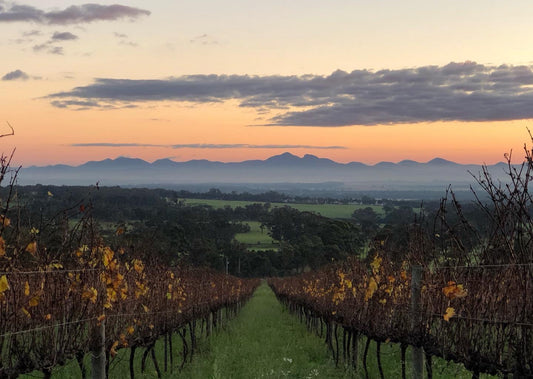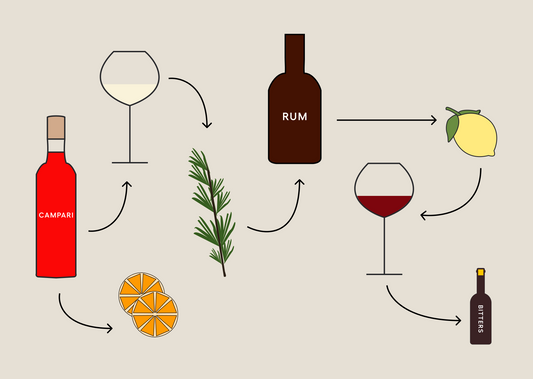Marking Earth Day
The first Earth Day was held on 22nd April 1970. Over five decades on, we're looking at how climate change has affected the wine industry, and what steps wine makers are taking to reduce their impact on the environment. As a speciality crop, grapes are particularly sensitive to climate factors, but wine makers across the world are rising to the challenge with some innovative and effective initiatives.
The impact of climate change
Grapevines are cultivated on almost every continent, which shows how diverse the plant is in terms of growing environments. However, that doesn't tell the whole story. Since winemaking first began in 6,000 BC, it has relied on a balance between seasons - from frost in winter to heat in the summer - and grapevines of all varieties are sensitive to climatic conditions.
For viticulture to be successful, there needs to be a temperature range of between 12 and 22 degrees Celsius over a seven-month growing season. In a recent Tedx Talk, US winemaker Greg Jones explained that lower temperatures limit the viability and ripening of the grape, while prolonged periods of warm and hot temperatures can affect the sugar accumulation and levels of acid concentration.
With climate change bringing warmer temperature, extreme weather and less predictable seasons the wine industry is exploring ways to evolve so that it can continue to thrive.
Adapting to change
There are over 5,000 varieties of wine grapes with different needs in terms of growing conditions. Some grapes – such as Pinot Noir – can be grown in a range of climates. In cooler temperatures, Pinot Noir is lighter-bodied and paler, while in warmer climates it’s fuller-bodied and darker in colour. Winegrowers need to plan for the future, and they are doing so by planting new varieties, changing their harvesting season, and implementing sustainable vineyard management practices.

Perelada Winery, Spain
Situated in the remote Empordà (DO) region of north-eastern Catalonia, the Perelada Winery has an ambitious approach to sustainability. Over the last decade, the Suqué-Mateu family has implemented many new initiatives to make their wine making more sustainable – from building a completely new winery to adopting innovative regenerative growing techniques.
The new Perelada Winery is the first winery in Europe to be awarded the LEED® BD + C environmental and energy certification. Solar panels and geothermal wells deliver 57% of their energy consumption, with the balance coming from renewable energy sources. And the building design – with its focus on using natural light – reduces the overall energy requirement.
Sustainability is a big driver in the vineyard too. Reclaimed water from a nearby treatment plant meets its irrigation needs, and a technologically optimised drip irrigation system – complete with soil moisture sensors and a dendrometer to determine a plant’s specific water needs – brings exceptional efficiency. Satellite-based weather forecasting also enables the wine growers to plan irrigation a week in advance, further improving the vineyard’s efficacy.
Matthiasson Winery, California
Husband and wife team Steve and Jill Matthiasson have a background in sustainable agriculture, and have spent the last 20 years applying those principles to wine making. Using biodynamic farming methods and natural fertilisers, they treat the vineyard as a self-sustaining ecosystem with a focus on rebuilding soil health and increasing carbon sequestration. They have sheep and chickens in the vineyard to improve soil health, control weeds, and create a more diverse, resilient ecosystem.
Like Perelada Winery, the Matthiassons rely on renewable energy sources including their own-generated solar power, and they limit water usage with a high-tech drip irrigation system. They are also enthusiastic about sharing their knowledge with other growers and producers to help make the industry more sustainable as a whole.
Organic & Natural Wine
In 2022, the worldwide organic wine market was worth $28 billion, and it is projected to grow 15.9% by 2030. Its growing popularity is in part due to the more positive impact organic winemaking has on the environment compared to conventional wine production methods.
Makers of natural wine use organic, biodynamic or regenerative growing methods. They avoid synthetic pesticides, herbicides and fertilisers which can harm the local ecosystem, and choose biodegradable compost, natural fertilisers, and cover crops to prevent soil erosion.
Biodiversity within the vineyard is also a key ambition for natural winemakers, with a greater variety of plants, insects, and wildlife compared to monoculture vineyards. This relates to soil too, with animals used to promote soil health, which in turns helps the vines resist disease. The only caveat for natural wine is that it requires more land to produce the same yield as conventional winemaking. But if this is managed in a sustainable way, it feels like natural wine could play a key role in how the wine industry develops in the future.
You can read more about natural wine in our article here.

Carbon footprint
Our assumptions about carbon footprint don’t always bear out. For example, you might imagine that wines shipped from South Africa to the UK would have a significant carbon footprint, but for some of them, with the wines shipped in bulk then bottled in the UK, and due to favourable growing conditions, the carbon footprint is relatively low. However, it is true that shipping carries a significant environmental cost overall, especially as wine needs to be stored at specific temperatures and humidity levels.
Château Maris in France is run by British ex-pat Robert ‘Bertie’ Eden. He has been called ‘the godfather of organic and biodynamic winemaking in the Languedoc’ and his winery has been described as one of the five most environmentally friendly in the world.
To help keep their carbon footprint low, Eden exports his wines for the US market in the temperature-controlled cellar of an 80-foot steel hulled schooner. Once the wine is delivered in New York, the boat picks up coffee and cocoa from the Dominican Republic and carries it back to France. A typical three-month voyage uses 150 litres of diesel fuel, compared to traditional cargo ships, which burn up to 200 tons a day.
Eden’s commitment to sustainability is equally impressive at home. Horses are used on the vineyard and the vines are treated with ‘herbal teas’. The wine production area uses a wood-hemp material called hempcrete, making it a carbon negative facility.
Winemaking in the UK
Over the last 20 years, winemaking in the UK has grown by over 400%, and there are now over 800 vineyards producing award-winning sparkling, rose, white, and red wines. Climate change has played a significant role in its success. Last century, the most common grape varieties grown in the UK were cool-climate grapes such as Reichensteiner and Seyval Blanc. This initially shifted to varieties of sparkling wine – winning critical acclaim internationally – and now some wineries are exploring new grape opportunities such as Pinot Noir which, as mentioned earlier, is a grape that will respond relatively well to climatic changes.
A warming climate brings opportunities for some regions, and challenges for others. But every wine maker faces potential disruption due to the extreme and unpredictable weather that climate change brings – such as frost in spring. This has encouraged Innovate UK and Defra to fund the trial of a frost management project run by Dillions Vineyard in West Sussex, England. Sensors are installed in various vineyards across England and data is collected on frost risk at a micro level. These localised and variety-specific frost forecasts will be very effective in helping vineyards protect their vines.
Managing waste
Nobody likes to pour wine down the sink – it was the reason our founder Tom invented Eto – but the subject of wine waste actually goes much further than that. From the waste caused in the production process, to bottles and corks, the industry is looking at ways to minimise waste at every stage of wine’s lifecycle.

Leftover wine
According to the UK’s Waste and Resources Action Programme, about 50 million litres of wine – worth £270 million – is thrown away each year. And as studies show that wine drinkers are also drinking less than before, this problem could be set to get worse. Our solution is to use eto to preserve your wine for another day, and we really hope that eto can play its part in reducing wine waste in the future.
Packaging
Wine has historically been stored in glass bottles. These protect the wine and are easy to transport and store. However, making glass bottles demands a significant amount of heat and energy, and wine bottles are typically single use. On a positive note, glass is 100% recyclable, and while this does take further energy, it is an effective way of reducing waste.
The industry is looking at new packaging options but hasn’t found a large-scale alternative yet. Bag-in-a-box wine generates less waste, but needs to combat its association with low quality wine before it can be widely accepted. Aluminium cans are workable for some wines, but not those designed to age. And plastic bottles bring their own sustainability challenges. The best solution might be to move – culturally and practically – towards reusable bottles.
Wineries
There are a number of wineries leading the way in reducing waste. In Argentina, winemaker Marcelo Miras has implemented a range of environmentally responsible practices at his winery – from waste separation to recycling and compositing. Dal Borgo in the Salta region donates its dry waste to art schools, and Rosell Boher in Mendoza repurposes waste to produce bricks, furniture, and even curtains. Humberto Canale in Patagonia uses photovoltaic roof panels to produce clean energy, and the by-products of this are converted into compost.
During the wine making process, about 20% of the grape – mainly the skin, seeds and stem – becomes a waste product known as pomace. Some winemakers are collaborating with emerging brands to turn pomace into exciting new by-products. Westhill Wines in the Napa Valley donates pomace from its Pinot Noir and Ortega grape harvest – with its anti-aging antioxidants – to Pelegrims who use it in their range of skin care products. Vegea turns grape pomace into a vegan-friendly leather alternative. And Discarded Spirits use pomace in their Chardonnay vodka – giving it delicious extra flavour.
Celebrating on Earth Day
All these initiatives show that there is much within the wine industry to celebrate on Earth Day. The rise of organic & natural wine. New initiatives to promote sustainable winemaking. Technological advances to improve efficiency and reduce energy and water use. And there is also evidence that the industry is adapting to the changing climate by introducing new grape varieties and shifting their harvesting calendar. By following these two approaches simultaneously, the industry is set to change, but hopefully in a positive and exciting way.










